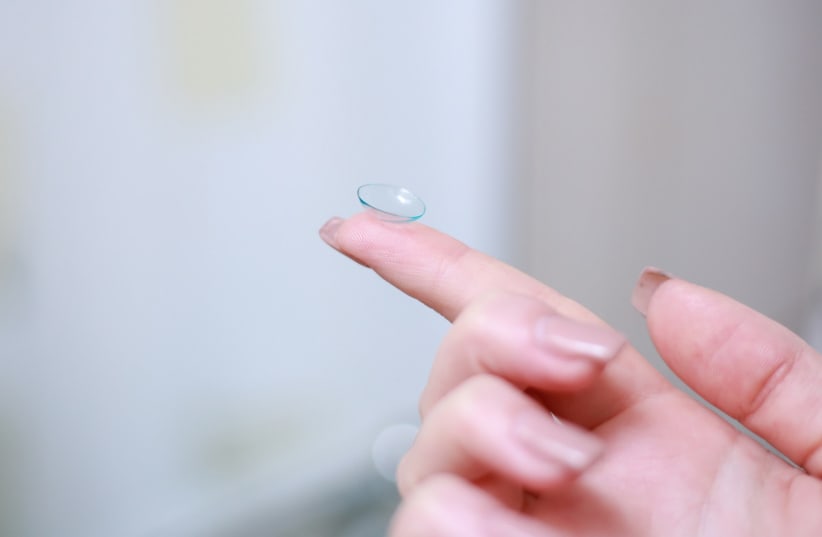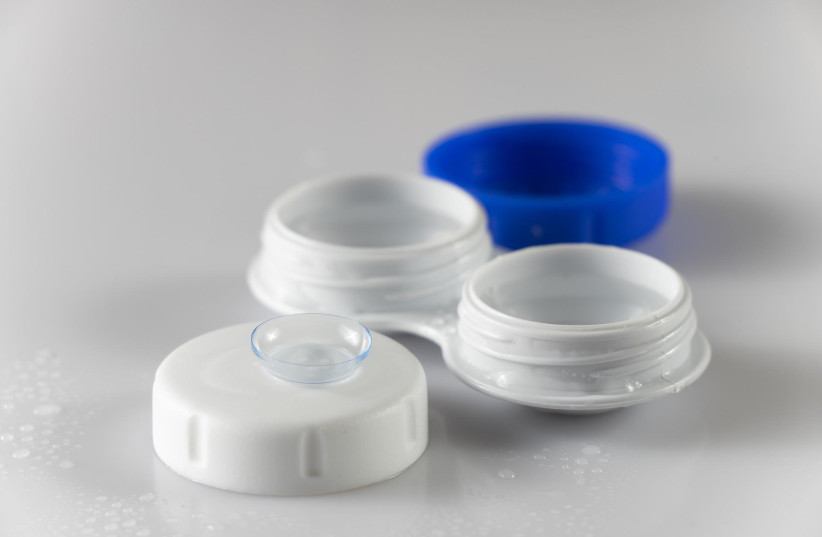Complications caused by wearing contact lenses – including infections, mechanical problems, allergies, lack of oxygen transfer and a rise in intraocular pressure – can cause irreversible damage to vision, according to an article published in the Hebrew-language journal of the Israel Medical Association, Harefuah (healing).
Teens ages 15 to 19 are the largest high-risk group, as younger ones are usually supervised by parents who take them for ophthalmological monitoring. Those in the late teens tend not to observe hygiene rules including handwashing before touching and proper soaking of lenses in antiseptic solutions. They also tend not to change the lenses on time or they wear them while sleeping, when they should be removed.
What does the science suggest?
Optometrists Nir Ardinest and David Berkow and ophthalmological surgeon Dr. David Landau of the Ophthalmology Department at Hadassah University Medical Center in Jerusalem’s Ein Kerem reported that there are an estimated 300,000 wearers of contact lenses in Israel, and their average age is 30.3 years +/-10.8 years. More than six out of 10 are females.
In 2020, 15% of wearers were using contact lenses for the first time. The most common types are soft, rigid gas-permeable ones made from firm plastic and disposable/frequent replacement ones. Just 4% were hard glass lenses, 22% were soft lenses made of hydrogel and 24% were made from silicone.
What are soft lenses made of?
Soft lenses made of a soft plastic are more comfortable than hard lenses because they hold more water, and many also provide protection from ultraviolet light. They are usually disposable and can be thrown away after a short period of use, generally every two to four weeks or even daily, depending on the type of lens prescribed. Being able to have a fresh pair of lenses means less chance of infection, less cleaning and more comfort, especially for people whose eyes naturally produce more protein that clouds lenses.
While most people choose soft contact lenses because of their benefits, there are also some disadvantages. Soft lenses easily absorb pollutants like lotion or soap from your hands, which can irritate your eyes. They are also more fragile than hard lenses and can rip or tear easily. The most recent types of soft contact lenses to hit the market include daily disposables worn only once without the need to clean them, and silicone extended-wear disposables.
Soft contacts need to be properly disinfected whenever they are worn, by soaking them in a disinfecting or multi-purpose solution overnight.
Rigid gas-permeable (hard) contact lenses are more firm than soft lenses and therefore more durable. Unlike older versions of hard lenses, rigid gas permeable ones are made with silicone polymers, allowing oxygen to circulate to the cornea of the eye. Compared to soft contact lenses, hard contacts maintain their shape better and offer clearer vision for some types of corrections. They are also extremely durable and easy to take care of.
But wearers of this type should be aware that there is a 10-to-15-times greater risk of developing corneal ulcers – a serious infection – that can damage vision if not treated.
Can you wear contacts to sleep?
Sleeping in any contacts can decrease the flow of oxygen to the cornea and lead to a serious eye infection that can harm your sight. Reshaping of the cornea may also occur. The amount of time needed to adjust to hard contacts often repeats itself after not wearing them for as little as a day, so to achieve maximum comfort, one has to wear them every day.
In the past, continued the Hadassah experts, it was assumed that switching from hydrogel to silicone lenses would reduce the incidence of complications, but this is not the case. The use of reusable lenses – weekly or monthly – that are produced from more advanced materials has not reduced complications.
Contact lens papillary conjunctivitis is the most common allergic complication, with affected wearers complaining about redness, itching, irritation and pain. Solutions with first-generation preservatives such as thimerosal or chlorhexidine caused severe reactions in wearers if they were used at too-high concentrations.
What can cause loss of vision?
Wearing contacts up to the age of 45 is the leading cause of infections of the cornea (microbial keratitis) in Western countries and is the most serious complication that can cause loss of vision, the researchers write. Some of the pathogens, especially Pseudomonas aeruginosa bacteria, are so virulent that they can destroy the cornea within just a few days.
More people are ordering contact lenses online, and this has increased complications because many wearers don’t get examined regularly by professionals, the authors warned.
Complications are the main reason that wearers stop using contact lenses, even if they don’t endanger sight. The researchers concluded that lenses should always be removed immediately the moment they cause discomfort, redness, irritation, pain or blurred vision, and a professional must be consulted.

